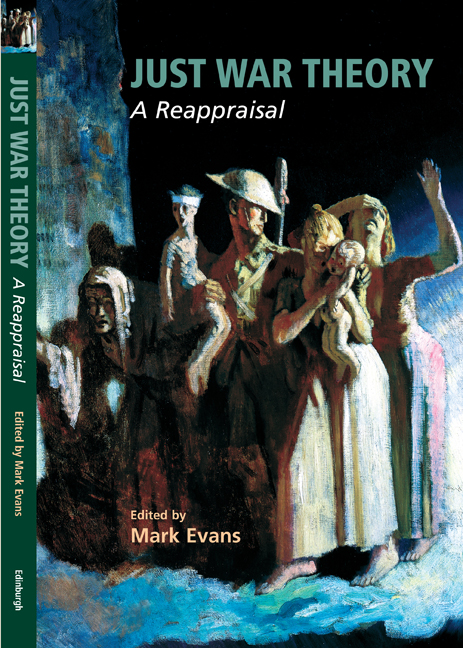Book contents
- Frontmatter
- Contents
- Notes on the Contributors
- Preface and Acknowledgements
- Introduction Moral Theory and the Idea of a Just War
- JUST CAUSE
- 1 The Justice of Preemption and Preventive War Doctrines
- 2 Punitive Intervention: Enforcing Justice or Generating Conflict?
- 3 In Humanity’s Name: Democracy and the Right to Wage War
- JUSTICE IN THE CONDUCT OF WAR
- 4 The Concept of Proportionality: Old Questions and New Ambiguities
- 5 Just War? Just Children?
- 6 Is There a Supreme Emergency Exemption?
- JUSTICE AND THE END OF WAR
- 7 Security Beyond the State: Cosmopolitanism, Peace and the Role of Just War Theory
- 8 Forgiveness and Reconciliation in Jus Post Bellum
- CONCLUSION
- In Defence of Just War Theory
- Bibliography
- Index
2 - Punitive Intervention: Enforcing Justice or Generating Conflict?
Published online by Cambridge University Press: 03 October 2020
- Frontmatter
- Contents
- Notes on the Contributors
- Preface and Acknowledgements
- Introduction Moral Theory and the Idea of a Just War
- JUST CAUSE
- 1 The Justice of Preemption and Preventive War Doctrines
- 2 Punitive Intervention: Enforcing Justice or Generating Conflict?
- 3 In Humanity’s Name: Democracy and the Right to Wage War
- JUSTICE IN THE CONDUCT OF WAR
- 4 The Concept of Proportionality: Old Questions and New Ambiguities
- 5 Just War? Just Children?
- 6 Is There a Supreme Emergency Exemption?
- JUSTICE AND THE END OF WAR
- 7 Security Beyond the State: Cosmopolitanism, Peace and the Role of Just War Theory
- 8 Forgiveness and Reconciliation in Jus Post Bellum
- CONCLUSION
- In Defence of Just War Theory
- Bibliography
- Index
Summary
Humanitarian intervention, while controversial, has become more acceptable as a reason for using military force in the last twenty years. But humanitarian intervention may be giving way to a related, yet distinct, form of intervention. This new form of intervention is characterised by a desire to punish wrongdoers, whether they are individual leaders or whole states, a phenomenon I call punitive intervention. Punitive intervention can be defined as the use of military force across national boundaries to alter the internal affairs of a state that has violated international law or other widely recognised international norms. A punitive intervention aims to deter future violations, to rehabilitate the offending state (usually by replacing its government), or to exact retribution.
US interventions in Panama (1989), Haiti (1994) and Somalia, especially to capture Mohammed Farah Aideed (1993), could be called punitive, as could the use of air power in Libya (1986) and Iraq (1993, 1998). The ongoing Russian intervention in Chechnya has a punitive dimension. The belated French intervention in Rwanda (1994) had punitive aspects. The NATO intervention in the former Yugoslavia has generated debate over whether or not the major powers should be in the business of capturing war criminals. The use of coercive air power by NATO against Serbia in 1999 sought to halt the violations of Albanian human rights but also to punish those responsible, particularly Slobodan Milosevic. The Israeli incursions into Lebanon (1982, 1996), like its campaigns since 2000 in the occupied territories, were partly designed to punish those who threaten Israeli security. The calls for intervention in Liberia in 2003 were in part humanitarian, but there was also an underlying desire to capture and punish President Charles Taylor. Finally, the US interventions in Afghanistan and Iraq following the attacks of 11 September 2001 have been couched largely in terms of punishing the states that allowed terrorists to operate on their territory and capturing those directly responsible. Indeed, the war on terrorism, which the Bush administration argues will be a long-term conflict, is punitive as well as preventive.
This use of military force to punish reflects an important normative shift in the international system. International law prohibits the use of force to punish; indeed, the concept of punishment is largely absent from international law.
- Type
- Chapter
- Information
- Just War TheoryA Reappraisal, pp. 50 - 70Publisher: Edinburgh University PressPrint publication year: 2020



